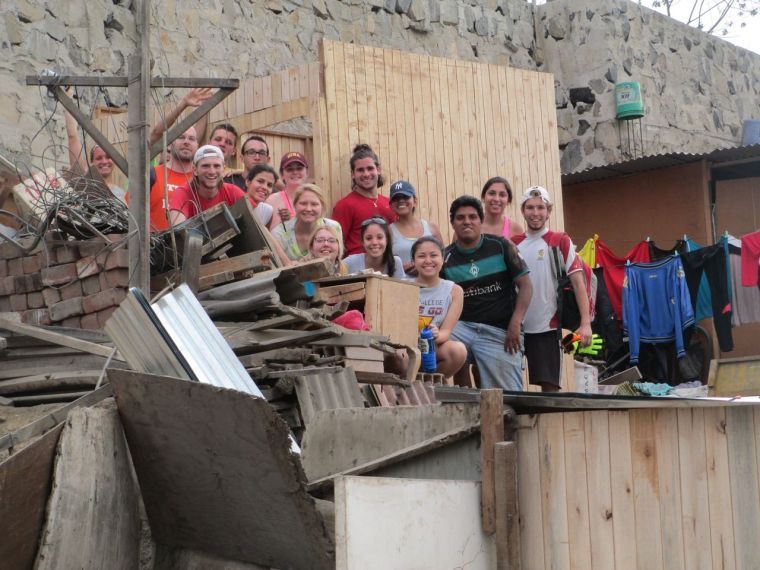Student Spotlight: mission trip leader leaves her mark
The IIM: Peru team, along with the Argentines and Jorge, the carpenter who helped build the houses with the team.
April 2, 2014
Sarah Lonergan-Rothschild, a commuter, international studies major and the co-leader of this year’s Iona in Mission trip to Peru, made it her job to become involved at Iona and to immerse herself in helping others.
In an interview with Sarah, the Ionian asks her about her experiences with Iona In Mission (IIM), why students should get involved and what advice she gives to students who are interested.
Ionian: What made you join IIM?
Sarah: I transferred to Iona as a sophomore and I’ve always known that I wanted to take part in an international service trip. When I saw a flier for a service trip to Cochabamba, Bolivia, I knew that I wanted to participate. It’s sometimes tough as a commuter to get involved and find something that’s attractive to you.
However, I took a chance, applied, and was chosen. Since that first trip I’ve kept coming back and I am so lucky to have had such wonderful and life-changing experiences with IIM.
I: How did you become the leader for IIM: Peru 2014?
S: I, along with (senior) Mike Stabile, led the IIM trip to Canto Grande in Lima, Peru this past January. Both Mike and I were fortunate to have gone to IIM: Peru 2013 for the first time last year.
The experience last year was indescribable and I knew that I wanted to share the magic that I experienced in Canto Grande with other students, so I applied to become a student leader.
I: What was the best part of leading IIM: Peru 2014?
S: Mike, my co-leader, was awesome and we balanced each other out perfectly. I can’t imagine leading Peru without him. Being able to share Peru and having people experience something that Mike and I really cherished was unbelievable.
We were excited to go to Peru again, but it was more exciting to have an incredible group of people experiencing their own journey.
I: What types of projects did you do while in Peru?
S: When our team would ask, “What will we be doing?” Mike and I would always laugh because there was no schedule, no set agenda.
Peru was about forming relationships within the community and mainly focusing on building relationships with children. We would spend our mornings playing with the kids, helping women peel beans, sewing, etc. We also built two homes for two families.
I: How do IIM trips impact participants?
S: These experiences stay with a person forever. For IIM: Peru, the students learn about immersion, simplicity, generosity, love, compassion and true happiness. Everybody who has gone to Peru wants to return because of how life changing the experience was.
It makes them see what is important in life, helps them engage with others, and forces them to step out of their comfort zone. These experiences also encourage and inspire people to lead a trip of their own which is a great way to keep and expand the IIM program.
I: Any advice for future IIM leaders?
S: It’s not something you do to put on your resume; you do it because you want to share your passion, compassion, enthusiasm and experiences with people while preparing a team for an incredible journey.
Both Mike and I were so passionate about the trip, the people we encountered, and the experience all together. We showed this through our information sessions promoting the trip, interviewing applicants, our weekly team meetings and while on the ground.
I think it’s important to have fun and to be a model for your team. The most important process the leader has to go through is team selection; your team and the dynamic all of you have is everything.








